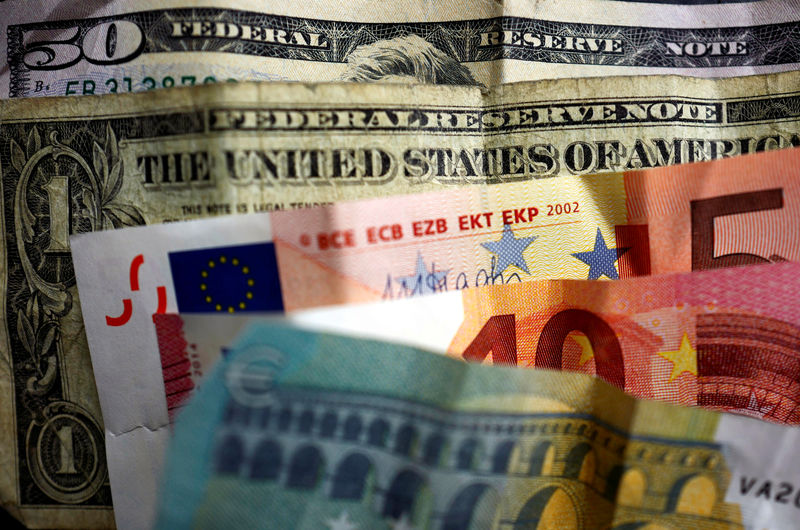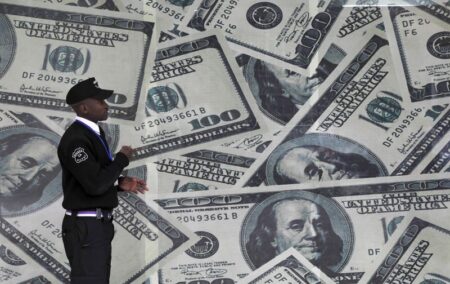Investing.com – The U.S. dollar slipped lower in early European trade Monday, trading near two-month lows ahead of the release of key U.S. inflation data for more clues over the timing of the start of the anticipated Federal Reserve rate-cutting cycle.
At 04:30 ET (09:30 GMT), the Dollar Index, which tracks the greenback against a basket of six other currencies, traded 0.1% lower at 102.287, after registering a hefty weekly loss of over 1% last, falling to levels last seen in mid January.
Dollar still weak ahead of U.S. CPI
The dollar was hit hard last week after comments from Fed chief , during his two-day testimony in front of Congress, were seen as dovish by the markets, suggesting the U.S. central bank was preparing to start cutting interest rates in the summer.
Mixed jobs data on Friday–with increasing by 275,000 but the rising to 3.9% in February after holding at 3.7% for three straight months–kept an anticipated June interest rate cut from the Fed on the table.
And now traders will be looking to Tuesday’s data as they try to gauge how soon the Fed could start cutting interest rates.
Economists are expecting February’s consumer price index to rise 0.4% after a faster than expected increase of 0.3% in January.
“We expect inflation figures to put a stop to the dollar decline this week,” said analysts at ING, in a note.
“The shifts in FX positioning last week no longer justify an exacerbation in USD downward pressure unless key data starts to turn in favour of Fed easing. There is a non-negligible risk that part of the USD losses driven by Powell’s testimony are unwound this week.”
Euro near eight-week high
In Europe, edged 0.1% higher to 1.0944, with the euro retaining strength after hitting an eight-week high against the dollar last week in the process of recording its best weekly performance against the buck since the week ended Dec. 22.
The ECB kept rates at record highs of 4% last week, while hinting that June could be the month to start cutting interest rates to support the region’s stuttering economy.
Traders will also be looking to the eurozone January print, due later in the week.
December’s report showed a large increase in production which erased a full year of declines. Another strong reading would be an encouraging sign for first quarter GDP growth.
“We see some downside risks this week for EUR/USD, and a correction could take it back to the 1.0850-1.0900 area,” said ING.
“However, our call for a first rate cut in June by both the ECB and the Fed can still argue for a higher EUR/USD, as the Fed should ultimately deliver a larger easing package.”
traded 0.1% lower at 1.2841, ahead of Tuesday’s release of the latest U.K. report, with traders and the Bank of England alike focusing on wage growth amid speculation over the timing of a first rate cut.
Yen in demand ahead of BOJ meeting
In Asia, traded 0.3% lower to 146.70, with the yen surging sharply in the past two sessions to an over one-month high, supported by growing conviction that the was close to ending its ultra-easy monetary policy.
An upward revision in GDP data showed the Japanese economy dodging a technical recession in the fourth quarter, giving the BOJ more headroom to tighten policy sooner, potentially as soon as next week’s meeting.
edged lower to 7.1840, while fell 0.2% to 0.6614 amid waning bets over more rate hikes by the .
Read the full article here












